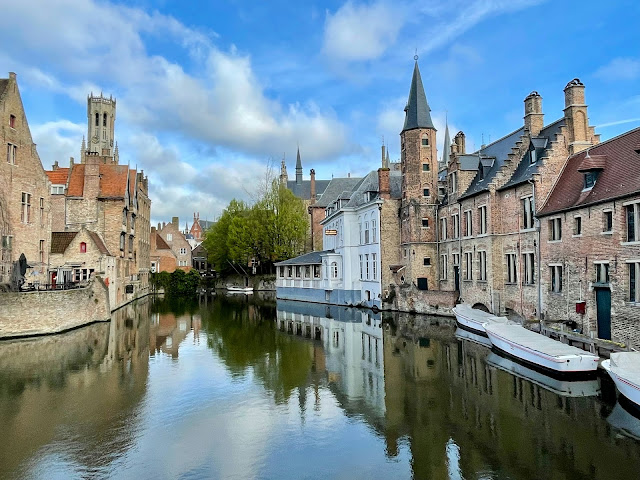Exploring the Magnificence and Significance of Bayon Temple in Cambodia
Bayon Temple is one of the most prominent and impressive structures in Cambodia. Located in the heart of Angkor Thom, the temple stands as a testament to the grandeur and ingenuity of the Khmer people who built it more than 800 years ago. It is a place of profound significance not only for the Cambodian people but also for the world at large.
This magnificent temple was constructed in the late 12th century by King Jayavarman VII, who was one of the greatest kings of the Khmer Empire. The temple was originally built as a Buddhist shrine but later became a Hindu temple under subsequent rulers. The temple's most striking feature is its multitude of stone faces, which are believed to represent the bodhisattva Avalokitesvara. The faces are carved into 54 towers that rise up to a height of over 37 meters, creating an awe-inspiring sight that visitors never forget.
Bayon Temple is not just a work of art, but also a symbol of the cultural and religious history of Cambodia. In the early 13th century, the Khmer Empire was at its peak, and Bayon Temple was at the center of its capital city. The temple served as a place of worship and a site for royal ceremonies, as well as a center of education and knowledge.
Despite having undergone significant restoration efforts over the years, parts of the temple's structure continue to show the ravages of time and the effects of weathering. Nevertheless, the temple remains a remarkable example of Khmer architecture and is a testament to the creativity and vision of the Khmer people.
Visitors to Bayon Temple can experience its mystical atmosphere firsthand as they explore the many intricacies of its design. The temple is divided into several levels, each with its own unique features, including galleries filled with intricate carvings depicting scenes from everyday life in ancient Cambodia. The central tower of the temple rises above the other structures, offering a panoramic view of the surrounding countryside.
The temple's significance extends beyond its religious and cultural value to its potential as a tourist attraction. Bayon Temple is a UNESCO World Heritage Site and one of the most visited sites in Cambodia. Every year, thousands of tourists flock to this remarkable temple to witness firsthand the stunning beauty of its architecture and learn about its historical and cultural significance.
However, tourism has also brought its own set of challenges. As more and more people visit the temple each year, there have been concerns about the impact of tourism on the site's fragile ecosystem. The Khmer government has worked hard to balance the need for tourism with the need to protect the temple's fragile environment. Efforts have been made to limit visitor numbers, regulate access, and prohibit certain activities that could damage the temple's structure.
In conclusion, Bayon Temple is a place of great historical, cultural, and architectural significance. It stands as a testament to the creativity, ingenuity, and vision of the Khmer people who built it over 800 years ago. As a UNESCO World Heritage Site, the temple is a must-visit destination for anyone interested in history, culture, and architecture. However, visitors must be mindful of the impact of their presence on the temple and the surrounding ecosystem and follow the guidelines set by the Khmer government to ensure that future generations can continue to enjoy this magnificent temple.
FAQs
What is Bayon Temple?
Bayon Temple is a Buddhist shrine turned Hindu temple located in the Angkor Thom complex in Cambodia. It was built in the late 12th century by King Jayavarman VII and is famous for its multiple stone faces and intricate carvings.
Why is Bayon Temple significant?
Bayon Temple is significant because it is a remarkable example of Khmer architecture and a symbol of the cultural and religious history of Cambodia. It served as a place of worship, center of education, and site for royal ceremonies during the Khmer Empire's peak in the early 13th century.
- How do I get to Bayon Temple?
Bayon Temple is located in the Angkor Thom complex in Cambodia. The best way to get there is to hire a guide or take a tour bus from Siem Reap, which is the nearest city to the temple.
- Can I climb the towers at Bayon Temple?
No, visitors are not allowed to climb the towers at Bayon Temple due to safety concerns and the potential for damage to the temple's fragile structure.
- Is there an entrance fee to visit Bayon Temple?
Yes, there is an entrance fee to visit Bayon Temple. The fee is included in the ticket price for the Angkor Archaeological Park, which grants access to all the temples in the area.
- When is the best time to visit Bayon Temple?
The best time to visit Bayon Temple is during the dry season, which runs from November to March. The weather is mild, and there is less chance of rain, making it easier to explore the temple's many levels and galleries.
- What should I wear when visiting Bayon Temple?
Visitors should dress modestly when visiting Bayon Temple, covering their shoulders and knees. Comfortable shoes are recommended as there is a lot of walking involved. It is also advisable to bring sunscreen, a hat, and plenty of water.
The Best Ways to Experience Cambodian Culture in Siem Reap, Visit To Best Places




Comments
Post a Comment
It's easy to leave a comment on our blog – anyone with a Google account can do it. We invite you to share your experiences by leaving a comment as well.